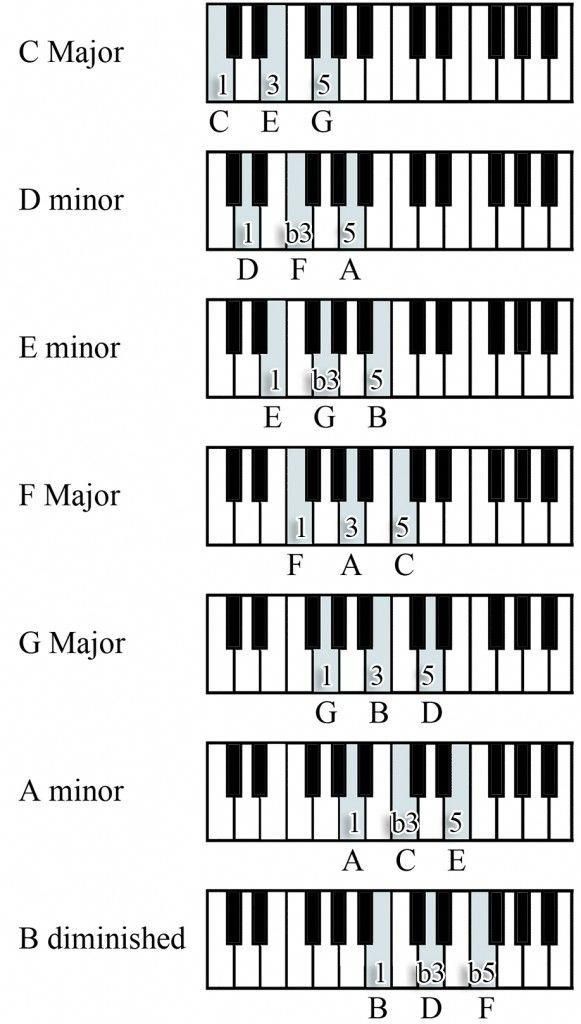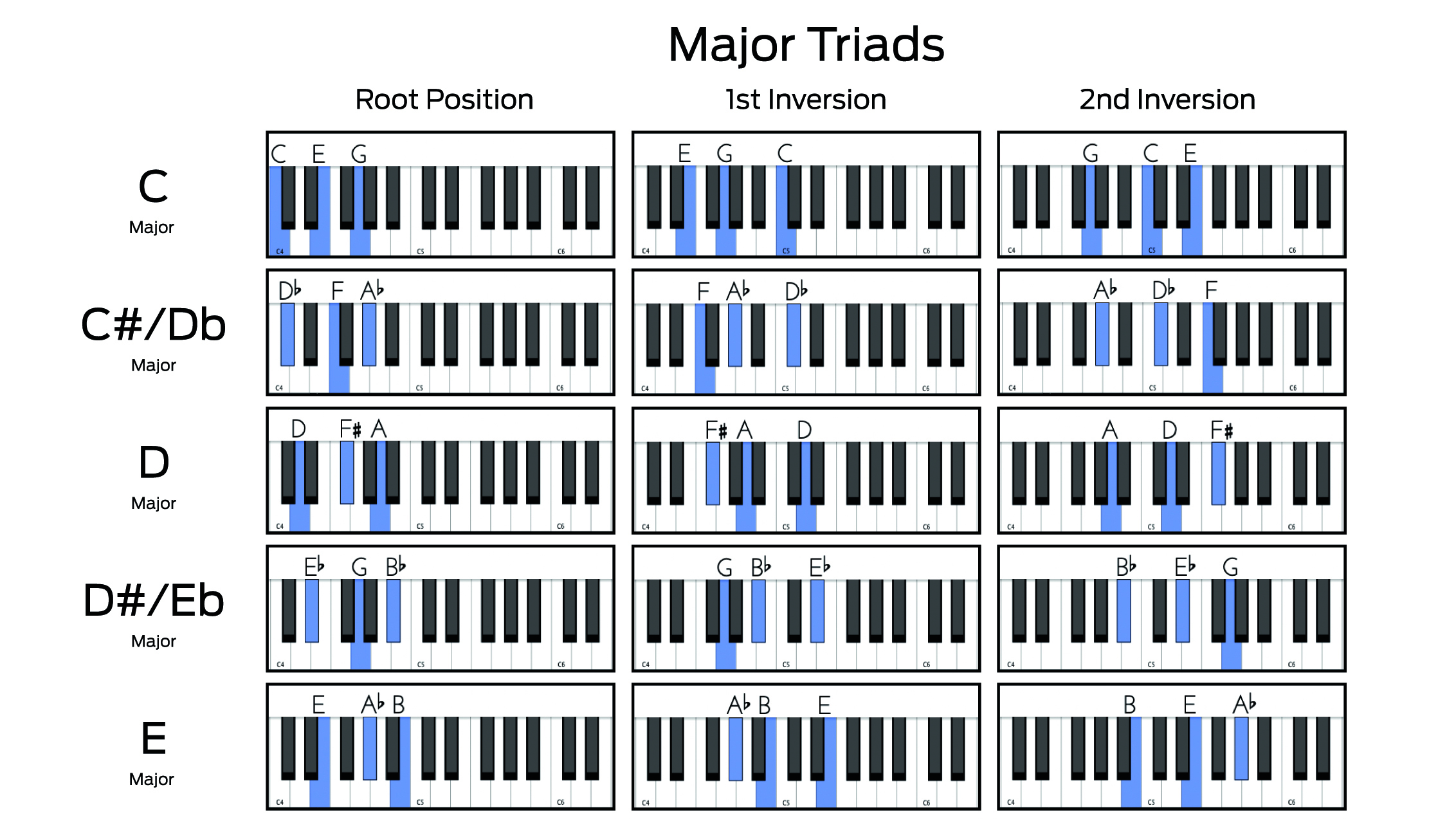What are chords and what do they do?
There are a few things you need to know about chords before you can begin to understand how they work in music and how they relate to music theory. First of all, what exactly is a chord? A chord is more than one musical note played at the same time; it’s an arrangement of several different notes played simultaneously, each with its own unique name and role in the overall structure of the chord itself. Secondly, what does it mean when we talk about the relationships between chords? For example, if we talk about a I chord followed by a V chord, then what are we saying about those two chords?

What is a chord?
A chord is a group of notes played together. Usually, three or more notes make up a chord, which can be either in harmonic or melodic context. Harmonic context means that a chord is being used to create harmonic movement, where a melody is moving from one note to another. Melodic context means that a chord is being used to support and embellish a melody line. Here’s an example of what I mean by each context I’ve taken a simple diatonic major scale (DO RE MI FA SO LA TI DO) and have added triads (three-note chords built from intervals within a key signature) on each degree: The first note (Do) has a C triad (C, E, G), followed by D with an F triad (F, A flat, C), then E with an F# minor triad followed by G with its corresponding G minor triad.
4 types of chords
In music, a chord is three or more notes played in harmony. The most basic of chords are triads. These can be major (think I Believe I Can Fly by R. Kelly), minor (like Bohemian Rhapsody by Queen) or diminished (God Only Knows by Beach Boys). Triads come in four varieties: major, minor, augmented and diminished. They’re described using roman numerals. To learn more about chord progressions and how to create them using common chords, check out our guide to chord progressions here.

What is the differance between a triad and a seventh chords?
A triad is a three-note chord, which contains at least one note (the root note) that is not a perfect fifth above another. A seventh chord is composed of four different notes; it’s a triad with an added seventh note. So, basically, to define what a seventh chord is we must first understand what a triad is.
Types of Chords
Major Triad Chord
A triad is a set of three notes (called pitch classes) arranged in any order. The first and last notes (1, 3) of a triad must both be from the same scale. For example, C-E-G is a C major triad because C is part of an E minor scale and E is part of a G major scale. So you can always identify a major chord by looking at its intervals: if it's three pitches that form four intervals up or down from one another, then it's probably a major chord. Minor Chords - Triad: Since we've figured out how to find major chords, let's try to figure out how to find minor ones!
Major Seventh Chord
The major seventh chord is a type of chord in music. A triad contains three notes, while a Seventh can have four notes, which include a Root Note (1), Major Third (3), Perfect Fifth (5) and Minor Seventh (b7). Chords can be constructed using various intervals other than thirds or sevenths, like perfect fourths or augmented seconds.
Minor Triad Chord
A minor triad chord is a three-note chord made of a root note, a minor third above it, and a perfect fifth above that. It has two versions, depending on which note you consider to be part of the chord. For example, if your first note is F (root), then your second note could either be E flat or G flat (the minor third). If you go with E flat, then your last note would either be C natural or D sharp (the perfect fifth).
Minor Seventh Chord
The Minor Seventh Chord is a dominant chord with a minor seventh interval. When you stack two minor thirds together, you get a minor seventh. In other words, it’s a third stacked on top of another third (like stacking three blocks). It’s also could be referred to as an Inverted Dominant Seventh Chord because it contains all of those notes that comprise an Altered Dominant Seventh (D-F#-A-C), but in reverse order from low to high rather than high to low like its cousin.
Augmented Triad Chord
In music theory, an augmented seventh chord is any seventh chord where a sharpened (raised) fifth scale degree occurs as a constituent note. An augmented seventh chord therefore has three distinct components: a root, a major third, and a perfect fifth above that root. When not otherwise specified, an augmented seventh chord includes both a major seventh interval with its inherent minor sixth, but also its enharmonic equivalent—the minor second.
Augmented Seventh Chord
In music theory, an augmented seventh chord is any seventh chord where a sharpened (raised) fifth scale degree occurs as a constituent note. An augmented seventh chord therefore has three distinct components: a root, a major third, and a perfect fifth above that root. When not otherwise specified, an augmented seventh chord includes both a major seventh interval with its inherent minor sixth, but also its enharmonic equivalent—the minor second.

Diminished Triad Chords
In harmonic theory, a triad is a set of three notes (also called a chord) that can be stacked in thirds. The most basic triad, called a major triad, is made up of the first (root), third, and fifth notes in a scale. A diminished triad chord replaces one of those thirds with another note—typically something minor. This makes for a darker, more complex sound than standard major or minor chords. And because you have less to work with harmonically speaking—there are only five diminished chords instead of seven for majors and minors—it’s easier to use them creatively when writing music.
Diminished Seventh Chords
When you play a diminished seventh chord, it can mean you take a minor triad (minor three-note chord) and remove either its root or third. You can make a diminished seventh chord by starting with a minor triad and lowering both its root note (also called 1 or R) and its third.
How chords sound together
The term chord is often used to describe a group of three or more different notes played together at once. When you hear a chord, you’re hearing more than one note being played at once because multiple notes make up any single chord. Different combinations of notes make up different chords, so in that sense, chords sound differently depending on what combination of pitches you play at once. But music theory teaches us that certain combinations sound good together while others don’t.
Chord progressions
What are chord progressions in music, and how can you use them to create unique songs of your own? Read on to find out! A chord progression is a series of musical chords played one after another. In popular music, it’s common for one chord progression to be used throughout an entire song—often as a backing track—while a lead singer sings over top. Using 1-4 basic chord progressions will allow you to write a number of original songs quickly. There are two types of chord progressions that you should know about: harmonized scales (major/minor) and triads/triad pairs. Harmonic scales contain 7 different notes called pitches, while triads only have 3 different pitches.
How to figure out chords on your own
To learn how to figure out what chord is playing, you need to familiarize yourself with some of the more common chord types. Chords are broken down into major and minor triads, as well as seventh chords. A major triad has a root note (or first note) a whole step above that root, and then another whole step above that note is another third interval from our scale. A minor triad has a flatted third interval between those three notes instead of a major third. Seventh chords have even more built-in complexity;
it’s easy to get lost in all of those added intervals when learning about chord progressions, but it’s helpful to have a basic understanding before moving on to songs like Seven Nation Army by The White Stripes. Triads are made up of thirds, which means if we build a major triad off of D Major (our first example), we would play an E note followed by an F#. Minor would be found one half step below its corresponding Major—so B Minor would contain C#, D# and E. In case it isn’t clear yet: Root + 3rd + 3rd = Triad!
What are chord inversions?
What’s a chord inversion? Put simply, it’s taking a chord, inverting it (flipping it upside down) and putting it back together. If you take a root position C-chord for example, you can start with that and move each note to its equivalent inversion. If we take C-E-G from our root position triad (C), we flip those notes around so that G is on top of E—and vice versa.
Conclusion
Learning how to play music is a rewarding experience. Not only will you learn about different musical scales, but you’ll also learn about chords and chord theory!
Chords come in many different varieties—major, minor, diminished, augmented—and learning how to form them can get pretty complicated. But once you understand what a chord is made of and how it works, your understanding of composition will improve dramatically. Once you understand what a chord is made of, any song can be broken down into its separate parts.
Want more great audio tips? Checkout other articles from our blog!
